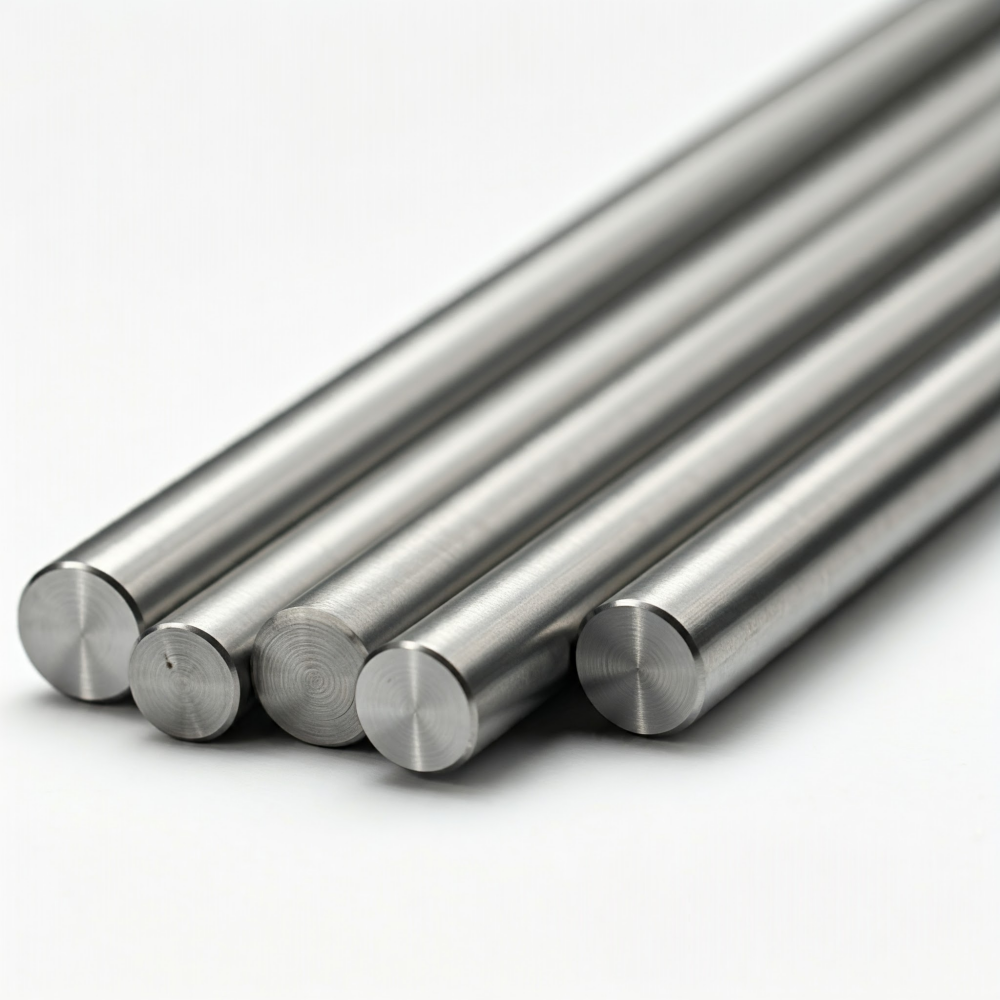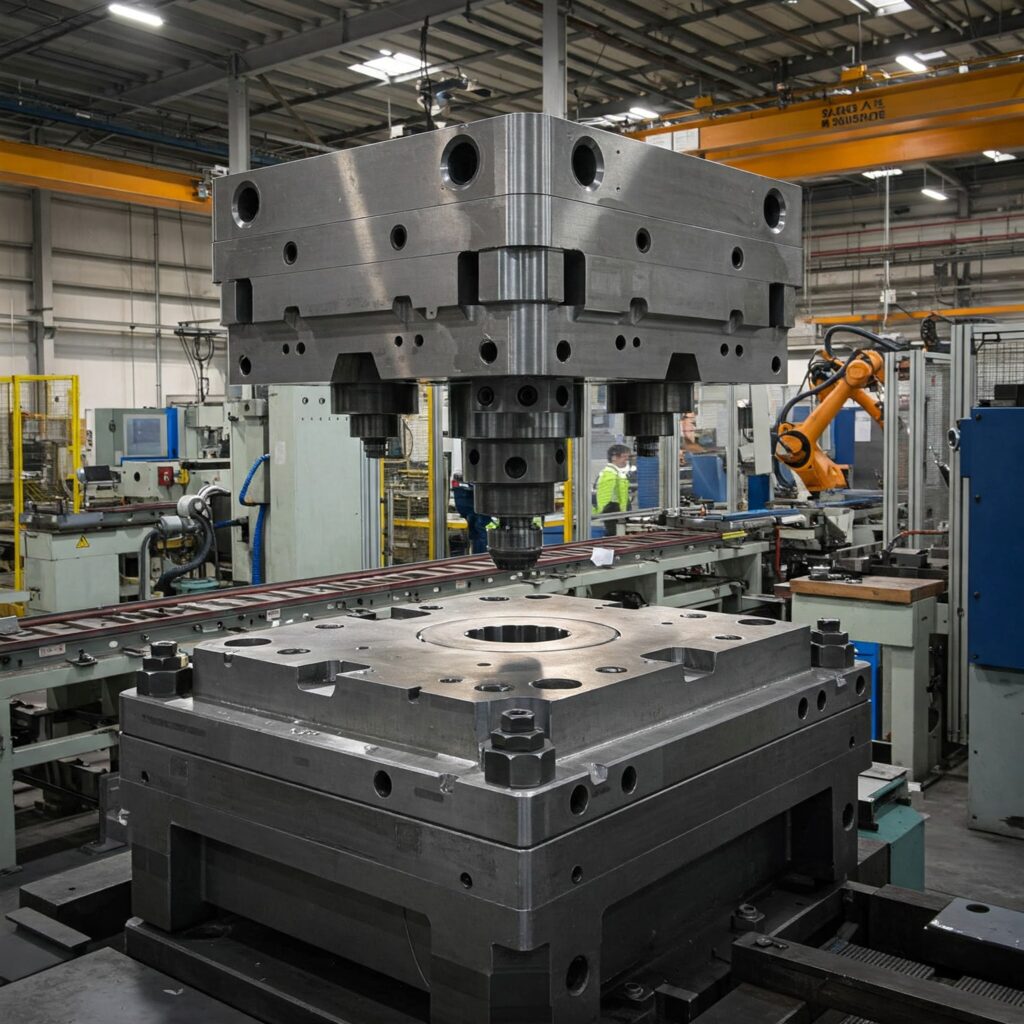P20 çelik bir AISI (Amerikan Demir ve Çelik Enstitüsü) tipi, orta alaşımlı kalıp çeliği. Genellikle önceden sertleştirilmiş halde tedarik edilir ve sertliği yaklaşık 28 ila 40 HRC veya yaklaşık 300 HB arasında değişir ve DIN 1.2311 olarak da bilinir. Başlıca kullanım alanları plastik kalıplar, çinko döküm kalıpları ve tutucu bloklardır. Bu makale, P20 çeliğinin sertliğine odaklanmaktadır.
1. Sertlik P20 Çelik İçin Neden Kritiktir?
P20 çeliğinin kalıp ve pres kalıplarında uygulanmasında sertlik çok önemli bir özelliktir. Bu özellik esas olarak aşağıdaki hususlarda kendini gösterir:
- Deformasyon ve Aşınmaya Karşı Direnç: Yeterli sertlik, çeliğin kalıplama sırasında karşılaşılan yüksek yük ve basınçlara dayanmasını sağlayarak plastik deformasyonu önler. Aşındırıcı plastiklerin işlenmesinde ise yeterli sertlik, takım ömrünü uzatmak için gerekli aşınma direncini sağlar.
- İşlenebilirlik: P20 genellikle uygulama için sertlik ve işleme kolaylığı arasında bir denge sunan önceden sertleştirilmiş bir durumda tedarik edilir ve bu da ek yüksek sıcaklıkta ısıl işlem olmadan karmaşık kalıp boşluklarının oluşturulmasına olanak tanır.
- Parlatılabilirlik: Karbürizasyonla artırılabilen yüksek yüzey sertliği, şeffaf plastik kalıplar için gereken pürüzsüz, kritik yüzeylerin elde edilmesi için gereklidir.

2. P20 Çelik Sertliğini Etkileyen Faktörler
2.1 Kimyasal Bileşim
P20 çelik bileşimi
| Karbon (C) | Manganez (Mn) | Silisyum (Si) | Krom (Cr) | Molibden (Mo) | Fosfor (P) | Sülfür (S) |
| 0,28 – 0,40 | 0,60 – 1,00 | 0,20 – 0,80 | 1.40 – 2.00 | 0,30 – 0,55 | ≤ 0.030 | ≤ 0.030 |
P20, kimyasal bileşimi özellikleri açısından kritik öneme sahip düşük alaşımlı bir takım çeliğidir. Başlıca Alaşım Elementleri ve Sertlik ve Özelliklere Katkıları:
- Karbon (C): 0,28-0,40%. Sertliği ve mukavemeti etkiler.
- Krom (Cr): 1.40-2.00%. Aşınma ve korozyon direncini artırır. Kromun varlığı tokluk ve sertliği artırır.
- Molibden (Mo): 0,30-0,55%. Tane yapısını iyileştirir, tokluğu ve kaynaklanabilirliği artırır.
- Mangan (Mn): 0.60-1.00%. Deoksidasyona yardımcı olur, kırılganlık yaratmadan çekme dayanımını artırır.
- Silisyum (Si): 0.20-0.80%. Deoksidasyona yardımcı olur, kırılganlık yaratmadan çekme dayanımını artırır.
- Fosfor (P) ve Kükürt (S): ≤ 0,03% (maks.). Küçük miktarlar genel performansa katkıda bulunur. Uygun miktarda S elementi eklendikten sonra, iyileştirilmiş P20S çelik daha iyi işleme performansına sahiptir.
- Nikel (Ni): Ni alaşımı eklendikten sonra, geliştirilmiş çelik P20Ni (1.2738) işleme elverişli olan tokluğu ve sünekliği önemli ölçüde artırabilir.
2.2 Isıl İşlem Prosesleri
P20, çeşitli uygulamalar için belirli sertlik seviyelerine ulaşmak amacıyla yağda söndürülebilir ve daha sonra temperlenebilir.
Söndürme ve sertleştirme sonrası P20 çeliğinin sertliği temperleme1
| Tavlama Sıcaklığı | Rockwell C Sertliği |
| Söndürüldüğü gibi | 51 |
| 400°F / 205°C | 49 |
| 600°F / 315°C | 47 |
| 800°F / 425°C | 44 |
| 1000°F / 540°C | 39 |
| 1100°F / 595°C | 33 |
| 1200°F / 650°C | 26 |
| 1250°F / 675°C | 21 |
- Ön Isıtma Sıcaklığı: 1200°F / 650°C (Daha büyük kütleli parçalarda kullanılırsa.)
- Sertleşme Sıcaklığı: 1525°F / 830°C
- Söndürme Yöntemi: Yağ Söndürme ve Karbürizasyon
- KİMYA: Karbon 0.30%, Manganez 0.75%, Silisyum 0.50%, Krom 1.65%, Molibden 0.40%
2.3 Karbürlenmiş ve Sertleştirilmiş Durum
P20 çeliği karbürlenebilir ve ardından P20 çelik sertleştirilmiş Yüzey sertliğini ve aşınma direncini artırmak için. Karbürleme ve sertleştirme işleminden sonra, P20 çeliğinin yüzey sertliği 65 HRC'ye ulaşabilir. Karbürleme işleminden sonra çekirdek sertliği genellikle yaklaşık 45 HRC'dir.
Karbürleme sıcaklığı, elde edilen yüzey sertliğini etkiler. Örneğin, 845 °C'de (1550 °F) karbürlenen numuneler 65,6 HRC yüzey sertliğine ulaşırken, 980 °C'de (1800 °F) karbürlenen numuneler 58,6 HRC yüzey sertliğine ulaşmıştır.
Karbürlenmiş P20 çeliğinin temperlenmesi, yüzey sertliğinde azalmaya neden olur ve temperleme sırasında yumuşamaya karşı direnci, düz karbon çeliğine benzer şekilde nispeten düşük kabul edilir.
2.4 Nitrürleme ve Tüfleme
Nitrürleme ve Tüfürleme (bir tür ferritik nitrokarbürizasyon), öncelikle sert nitrürlerin ve difüzyon bölgesinin oluşumu yoluyla P20 çeliğinin yüzey sertliğini önemli ölçüde artırır.
525°C'de amonyak gazında nitrürleme işlemi sonucunda yaklaşık 650HV yüzey sertliği elde edilebilmektedir.
570°C'de yapılan tüfleme işlemi, iki saatlik işlemden sonra yaklaşık 0,1 mm'lik yüzey sertliği tabakasıyla birlikte yaklaşık 700HV'lik bir yüzey sertliği sağlayabilir.
Nitrürleme aynı zamanda korozyon direncini de artırır.
3. Mekanik Özellikler (Sertlikle İlişkili)
- Çekme Dayanımı (Üst Düzey). P20 çeliği, 845 °C'de (1550 °F) yağ söndürme ve 205 °C'de (400 °F) 2 saat tavlama işleminden sonra, çekme dayanımına sahiptir. 1310 MPa (190 ksi).
- Akma Gücü. Yukarıdakiyle aynı ısıl işlem koşulları altında, akma dayanımına sahiptir 1172 MPa (170 ksi).
- Kopma Uzaması. Yağ söndürme ve temperleme işleminden sonra, 50 mm (2 inç) cinsinden uzama 13%.
- Darbe Dayanıklılığı (Charpy V-Çentik). Yukarıdakiyle aynı ısıl işlem koşulları altında, Charpy V çentik darbe enerjisi şu şekildedir: 43 J (32 ft·lbf).
- Basınç Dayanımı. Yaklaşık olarak çekme dayanımına eşittir.
- Elastiklik Modülü. 190-210 GPa veya 30 x 10^6 psi (207 GPa).
- Yoğunluk. 7855,1 kg/m^3 (7,855 g/cm^3).
- Isıl İletkenlik. 24 Btu/ft/saat/°F (41,5 W/m/°K) veya 34,0 W/(mK). İşleme ve kalıplama sırasında ısının dağıtılması için önemlidir.
- Poisson Oranı. 0.27-0.30
- Isıl Genleşme Katsayısı. 12,8 x 10^-6/°C (20-425°C).
4. P20 Çelik İşlenebilirliği ve Yüzey Kaplaması (Sertlikle İlişkisi)
P20 çeliği, 1% karbon çeliğinin yaklaşık 60-65%'sinde veya 1% karbon takım çeliği standardına (100 puan) kıyasla 65%'sinde mükemmel işlenebilirliğe sahiptir. Önceden sertleştirilmiş P20, ek ısıl işlem uygulanmadan doğrudan işlenebilir, ancak işleme sırasında oluşan ısı, iş sertleşmesine ve boyutsal hatalara neden olabilir. Çözümler şunlardır:
- Isıyı azaltmak için düşük kesme hızları ve yüksek ilerleme oranları kullanın.
- Titanyum nitrür (TiN) gibi malzemelerle kaplanmış aletler kullanın.
- Isıyı dağıtmak ve yağlamak için soğutma sıvılarını etkili bir şekilde uygulayın.
- Bryson, WE (2007). Takım Çeliklerinin Isıl İşlemi, Seçimi ve Uygulaması (s. 195). Hanser Yayınları. ↩︎
Yüksek Performanslı P20 Takım Çeliği mi Arıyorsunuz?
Üstün takım çelikleri dövme konusunda 20 yılı aşkın deneyime sahip güvenilir uzmanlarınız Aobo Steel ile ortak olun. Üretim ihtiyaçlarınızı karşılamak ve operasyonel verimliliğinizi artırmak için hassas bir şekilde tasarlanmış en yüksek kalitede P20 çözümleri sunuyoruz.
İster standart P20'ye ister özel bir spesifikasyona ihtiyacınız olsun, uzmanlarımız malzeme seçiminde size yardımcı olmaya ve rekabetçi, bağlayıcı olmayan bir teklif sunmaya hazırdır.
Başlamaya hazır mısınız? Bizimle iletişime geçmek için aşağıdaki formu doldurun!


